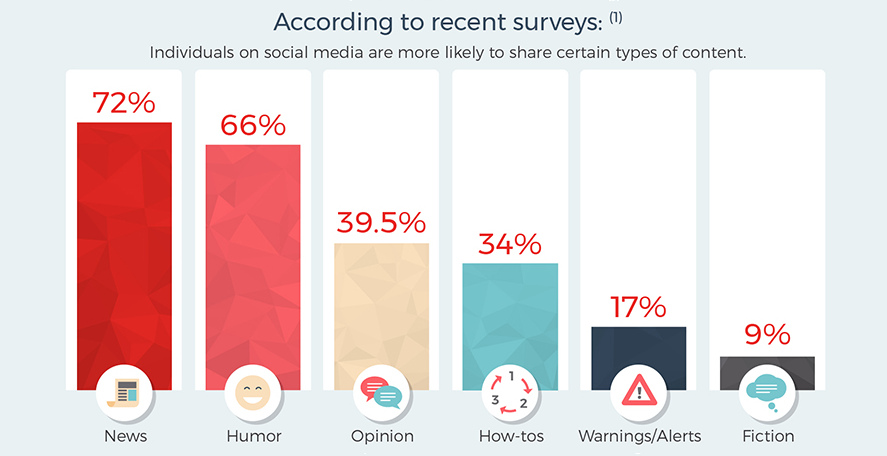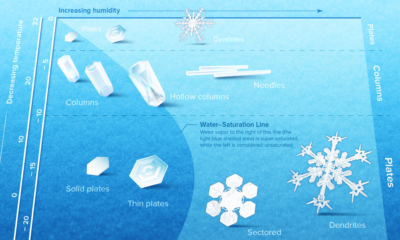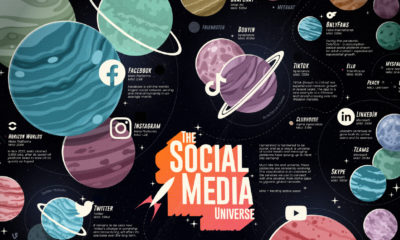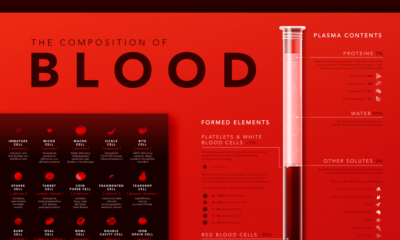That means social networks and other distribution channels are flooded with content – and so naturally, as a way of filtering and screening our feeds, we gravitate to the content that everyone else is sharing. These widely-shared articles, infographics, and videos tend to pique our curiosity, or they hit us with powerful “a-ha” moments. After all, these things are going viral for a reason.
Making Things Go Viral
Whether you are a marketer or an occasional writer, it’s worth knowing how this coveted viral effect comes about. Today’s infographic comes from Outgrow, and it covers two psychological theories on what leads to viral content, why we share certain things, and some examples of winning viral campaigns that took advantage of triggering these emotions.
People share individual pieces of content for all types of reasons, but there are some commonalities. According to psychological theory, content that feels novel or that fills information gaps may trigger the release of dopamine in the brain. Further, content that touches the right emotions (excitement, surprise, nostalgia, etc.) can also latch onto a viral effect.
Virality and The Brain
What role does psychology play in making things go viral? Here are two well-documented psychological effects that trigger the reward pathways in the brain.
- Novelty Seeking Your mind is tired of seeing the same old ideas over and over again. That’s why things that are new or unusual will catch your eye – and this includes the content on your favorite website or social feed. In fact, the brain is hardwired to search for novelty in this way. Seeing something new can motivate us to explore our environment for rewards, and with social media that reward is just a click away.
- Information Gap Theory Humans are obsessed with information and have an unquenchable interest in the world around them. That’s why, when your Facebook feed provides a chance to temporarily satisfy your curiosity with just one click, you can’t help but succumb. Scientists haven’t figured out exactly how curiosity works yet, but what we do know so far is that it’s an itch that humans feel they must continually satisfy. More specifically, according to George Loewenstein’s information gap theory, we often act to fill a gap between what we know, and what we want to know.
Sharing is Caring
But even if something catches our attention, it still needs to spread far and wide to have a viral impact. That’s why the reasons we share content are important, and why posts typically hit on certain emotions to achieve virality. People share content to:
Connect with someone over a shared interest Promote a product they believe is useful to others Be involved in a current trend or event Be the first to tell a friend about a trend or event Share something about themselves Socialize with friends offline Promote a good cause Demonstrate their own knowledge or ability Start an online conversation Boost their reputation among friends
Lastly, specific positive emotions lead people to sharing content, including those of amusement, affection, surprise, happiness, and excitement. On the flipside, nostalgia and disgust are two other psychological responses that trigger sharing as well.
on Even while political regimes across these countries have changed over time, they’ve largely followed a few different types of governance. Today, every country can ultimately be classified into just nine broad forms of government systems. This map by Truman Du uses information from Wikipedia to map the government systems that rule the world today.
Countries By Type of Government
It’s important to note that this map charts government systems according to each country’s legal framework. Many countries have constitutions stating their de jure or legally recognized system of government, but their de facto or realized form of governance may be quite different. Here is a list of the stated government system of UN member states and observers as of January 2023: Let’s take a closer look at some of these systems.
Monarchies
Brought back into the spotlight after the death of Queen Elizabeth II of England in September 2022, this form of government has a single ruler. They carry titles from king and queen to sultan or emperor, and their government systems can be further divided into three modern types: constitutional, semi-constitutional, and absolute. A constitutional monarchy sees the monarch act as head of state within the parameters of a constitution, giving them little to no real power. For example, King Charles III is the head of 15 Commonwealth nations including Canada and Australia. However, each has their own head of government. On the other hand, a semi-constitutional monarchy lets the monarch or ruling royal family retain substantial political powers, as is the case in Jordan and Morocco. However, their monarchs still rule the country according to a democratic constitution and in concert with other institutions. Finally, an absolute monarchy is most like the monarchies of old, where the ruler has full power over governance, with modern examples including Saudi Arabia and Vatican City.
Republics
Unlike monarchies, the people hold the power in a republic government system, directly electing representatives to form government. Again, there are multiple types of modern republic governments: presidential, semi-presidential, and parliamentary. The presidential republic could be considered a direct progression from monarchies. This system has a strong and independent chief executive with extensive powers when it comes to domestic affairs and foreign policy. An example of this is the United States, where the President is both the head of state and the head of government. In a semi-presidential republic, the president is the head of state and has some executive powers that are independent of the legislature. However, the prime minister (or chancellor or equivalent title) is the head of government, responsible to the legislature along with the cabinet. Russia is a classic example of this type of government. The last type of republic system is parliamentary. In this system, the president is a figurehead, while the head of government holds real power and is validated by and accountable to the parliament. This type of system can be seen in Germany, Italy, and India and is akin to constitutional monarchies. It’s also important to point out that some parliamentary republic systems operate slightly differently. For example in South Africa, the president is both the head of state and government, but is elected directly by the legislature. This leaves them (and their ministries) potentially subject to parliamentary confidence.
One-Party State
Many of the systems above involve multiple political parties vying to rule and govern their respective countries. In a one-party state, also called a single-party state or single-party system, only one political party has the right to form government. All other political parties are either outlawed or only allowed limited participation in elections. In this system, a country’s head of state and head of government can be executive or ceremonial but political power is constitutionally linked to a single political movement. China is the most well-known example of this government system, with the General Secretary of the Communist Party of China ruling as the de facto leader since 1989.
Provisional
The final form of government is a provisional government formed as an interim or transitional government. In this system, an emergency governmental body is created to manage political transitions after the collapse of a government, or when a new state is formed. Often these evolve into fully constitutionalized systems, but sometimes they hold power for longer than expected. Some examples of countries that are considered provisional include Libya, Burkina Faso, and Chad.

















